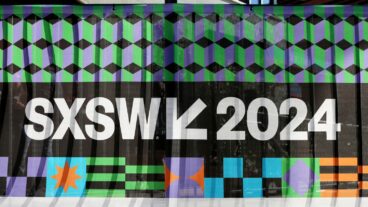A new software tool from Israel allows the blind and visually impaired to make accurate mental maps, giving them the confidence to venture into unfamiliar environments on their own.

The blind and visually impaired face daunting challenges in unfamiliar environments. With BlindAid, a new tool invented by an Israeli researcher, they can now explore new places and become familiar with them before they’ve even left the comfort of their homes.
The visually impaired often rely on others to provide cues and information for navigating their environments. The problem with this method is that it doesn’t give them the tools to venture out on their own, says Dr. Orly Lahav, of Tel Aviv University’s School of Education and Porter School of Environmental Studies.
To grant navigational “sight” to the blind, she has invented a new software tool to help them navigate through unfamiliar places. It is connected to an existing joystick, a 3-D haptic device that interfaces with the user through the sense of touch.
Users feel a physical sensation of tension beneath their fingertips as they employ the joystick to navigate around a virtual environment which they cannot see. For example, the joystick stiffens when the user meets a virtual wall or barrier.
The software can also be programmed to emit sounds – a cappuccino machine firing up in a virtual café, or phones ringing when the explorer walks by a reception desk.
A touchy-feely white stick
Lahav’s software takes physical information from our world and digitizes it for transfer to a computer, with which the user interacts. With the new computer application and joystick, users explore 3D virtual worlds based on maps of real-world environments and “feel out” streets, sidewalks and hallways.
The virtual “white cane” enables them to create accurate mental maps of the digital environments so that they can subsequently explore their real-life counterparts. By making unknown spaces familiar, the new solution gives users the control, confidence and ability to explore new spaces and places.
“This tool lets the blind ‘touch’ and ‘hear’ virtual objects and deepens their sense of space, distance and perspective,” Lahav asserts. “They can ‘feel’ intersections, buildings, paths and obstacles with the joystick, and even navigate inside a shopping mall or a museum like the Louvre in a virtual environment before they go out to explore on their own.”
The tool transmits textures to the fingers and can distinguish surfaces like tiled floors, asphalt, sidewalks and grass. In theory, any unknown space, indoors or out, can be virtually pre-explored, she says. The territory just needs to be mapped first – and with existing applications like GIS (geography information system), the information is already there.
Mental maps to independence
BlindAid, was recently unveiled at the “Virtual Rehabilitation 2009 International Conference,” where Lahav demonstrated case studies of people using the tool at the Carroll Center for the Blind, a rehabilitation center in Newton, Massachusetts.
It was there that a partially blind woman first used the application to explore the virtual environment of the center – as well as the campus and 10 other sites, including a four-story building. After just three or four sessions, the woman was able to effectively navigate and explore real-world target sites wearing a blindfold.
The virtual system becomes a computerized white cane for the blind, says Lahav. “They get feedback from the device that lets them build a cognitive map, which they later apply in the real world. It’s like a high-tech walking cane,” she says. “Our tool lets people ‘see’ their environment in advance so they can walk in it for real at a later time.”
Limitations in movement adversely influence one’s quality of life. This solution could help the visually impaired to find new options, like closer routes from home to train or bus stations.
“Ultimately, it helps the blind determine their own paths and gives them the ability to take control of their lives,” says Lahav, who first began this research under Prof. David Mioduser at Tel Aviv University, where she now works. She further developed her research with MIT colleagues Dr. Mandayam Srinivasan and Dr. David W. Schloerb.












